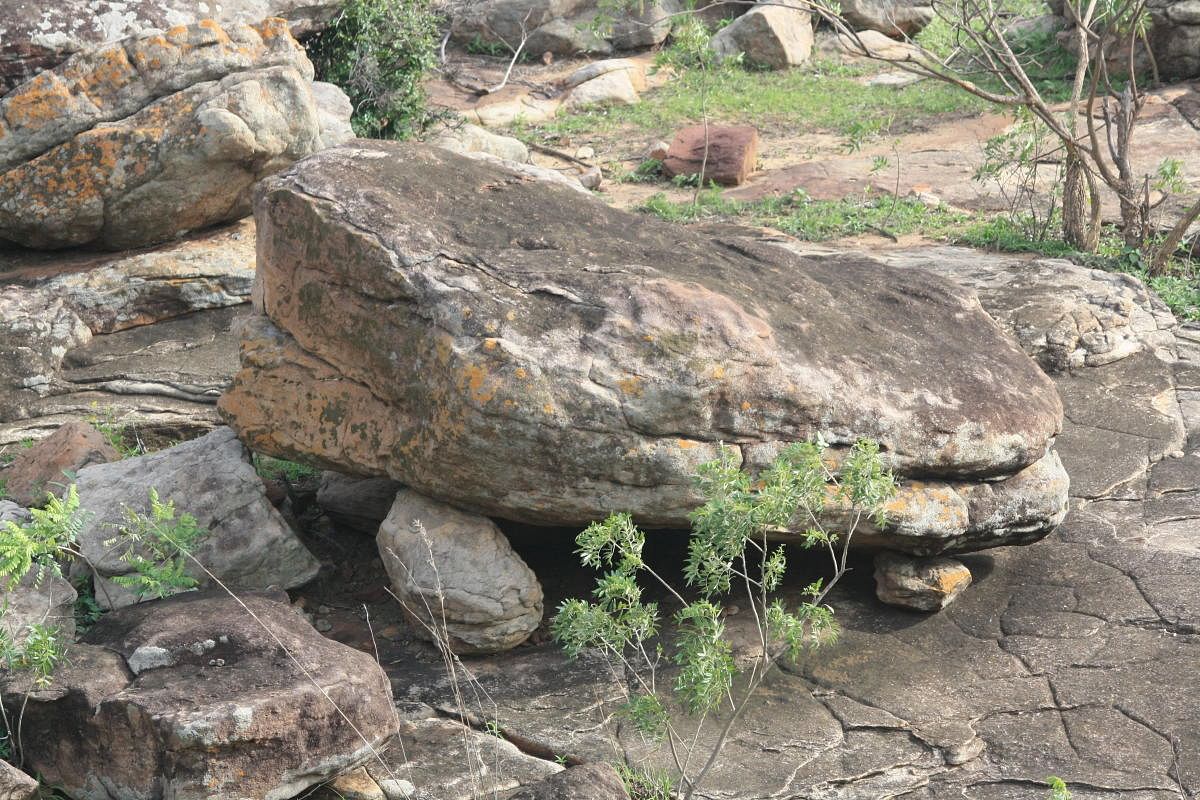

The Malaprabha river, which originates at Kanakumbi on the eastern flanks of the Western Ghats, flows through an arid valley hemmed in by sandstone cliffs for about 25 km, before it joins River Krishna. Roughly in the middle of this valley, along the left bank of the river as it makes a northward sweep, lie a huddle of ancient sandstone temples that make an otherwise nondescript village stand out.
These are the famous temple complexes at Pattadakal or Pattadakallu, built in the heyday of the Early Chalukyan dynasty, which ruled a large part of southern India from their capital at Badami, during the 6 - 8th century CE. These monuments, built mostly in the 8th century in the southern Dravida as well as the northern Nagara styles of temple architecture, are inscribed in the list of UNESCO World Heritage sites, and are some of the earliest temples in stone erected in southern India.
However, the Early Chalukyan artisans were not the first to build monuments in the Malaprabha Valley. At Bachinnagudda, just a couple of kilometres west of Pattadakallu, along the road leading to Badami, is a rough-looking monument believed to date back to the Iron Age (approximately 1200 BCE – 500 BCE). This monument, called a dolmen, belongs to a class of structures called megaliths, which were erected all over southern India mostly during the Iron Age and the succeeding Early Historic period.
Megaliths assume a lot of forms – from a simple erect stone known as a menhir, to boulder circles and dolmens, and are believed to be funerary or commemorative structures erected to honour the dead. The Malaprabha Valley had a flourishing tradition of megalith-building long before the first temple was erected on its soil, and several megalithic sites exist at Aihole and other places in the region, apart from Pattadakallu.
Value of quarries
The sandstone used to construct the temples of Pattadakallu was sourced locally, from the ranges to the north of the temple sites. At least three major quarries in the vicinity of Pattadakallu, which date back to the 8th century are known.
One of these ancient quarries is at a place called Motara Maradi, located less than 3 km to the north-west of the temples of Pattadakallu. It is a rocky spur jutting out from the main sandstone ranges which bound the northern limit of the valley.
To get to the site where the stones were quarried in the 8th century, one has to scramble up the southern slopes of this spur. There are several clues pointing to the occupation of the site by those early artisans – a rockface with inscriptions, and the sketch of an axe, which might have been the symbol of a guild, rubble foundations of what might have been the temporary structures in which the stone workers lived, and lots of evidence for the splitting of stones.
It is truly humbling to stand at this lonely, windswept hilltop, and imagine it as a hive of frenetic stoneworking activity more than a millennium ago — those gifted artisans living in modest circumstances in this wilderness and conjuring up such magnificent temples and sculptures, which we are rightfully proud of centuries later.
In a clearing to the west of the rock face, lie nineteen scattered structures, which appear to be megaliths. Most of them are stone circles, while five of them are cairns — mounds of earth and rubble, bounded by a stone circle. There are also four structures which resemble crude dolmens.
There are similar megalithic structures at other sites in the Malaprabha Valley. There are stone circles and cairns at Benakanawari and Kyaddigere, near Aihole, though the latter site has now been destroyed. Most of the stone circles at Motara Maradi are roughly 2.5 m in diameter, and appear to be constructed using medium-sized blocks as well as smaller chips of stone. Curiously, unlike the stone circles encountered at other megalithic sites, which use unmodified boulders as markers, these structures at Motara Maradi seem to be built of dressed stone blocks of moderate size, as well as smaller blocks and chips, which appear to be byproducts of dressing.
Enigmatic structures
The proximity of the site to the Chalukyan quarry, and the nature of the stone circles — built of worked stone rather than undressed boulders — suggest that these structures were constructed in the Chalukyan period, rather than the Iron Age. It is quite possible that these are the graves of Early Chalukyan artisans themselves. Though megalith-building was popular during the Iron Age and the Early Historic periods, it is quite likely that the erection of these enigmatic structures persisted into later periods, too. Archaeologist and prehisorian Prof Ravi Korisettar is of the opinion that megaliths continued to be erected along with temples in the Early Chalukyan period.
Only an archaeological excavation could settle the matter of whether the megalithic structures of Motara Maradi are the graves of Early Chalukyan artisans, or those of the unknown inhabitants of this spur from the Iron Age. This site, which is unprotected despite its obvious value towards advancing our understanding of history of this region, is fast falling prey to vandals. The site needs to be studied before it is lost forever: treasure seekers have dug up at least two of the graves in recent years.
Standing at this newly discovered megalithic site, one can gaze out across the valley to where the temples of Pattadakallu stand on the bank of the gently flowing Malaprabha. One cannot help being awed by the thought that the intrepid artisans who built these masterpieces lived, worked and probably lie interred at this lonely spot, which the crowds thronging the temples rarely visit.
(The writer is with the National Institute of Advanced Studies, Bengaluru)